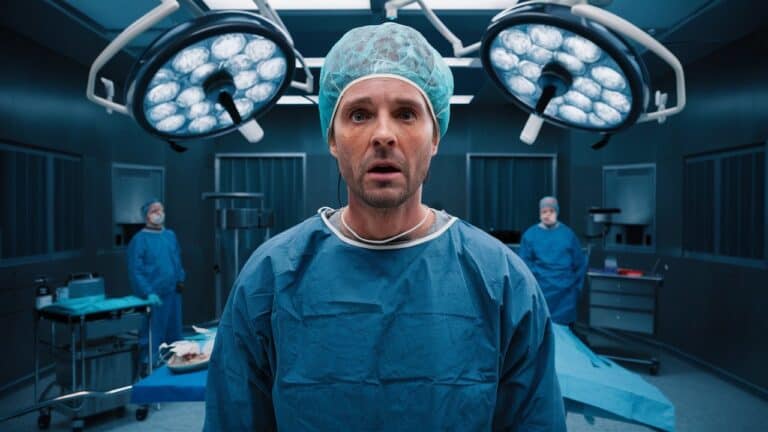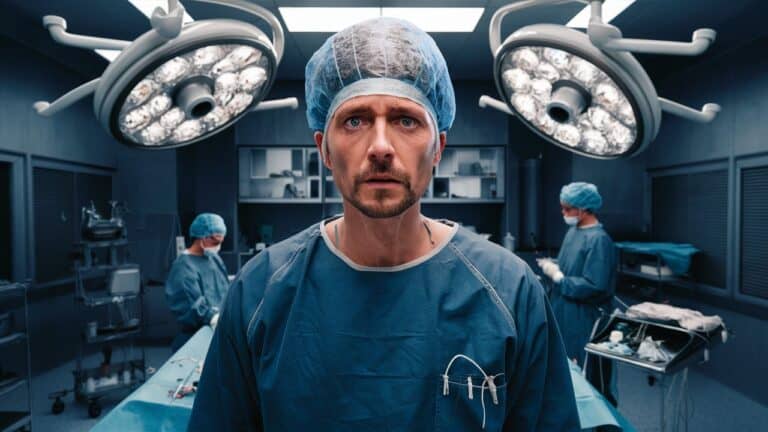Picture yourself cruising down a Maryland highway, savoring the open road, and suddenly – BAM. Your world is jolted as your car spins out of control. You’ve just been in an accident. One minute you’re at peace, the next your heart’s racing like a thoroughbred on Preakness day. This is when the importance of Determining Fault in a Car Accident comes into play
Your mind races too: “Who hit me? Was it my fault? How do I prove it wasn’t?” Figuring this out can feel like trying to solve a complex puzzle with missing pieces. However, this doesn’t have to be a daunting task when it comes to Determining Fault in a Car Accident.
wrap up the entire ordeal. We’ll touch on the importance of understanding negligence systems, how insurance companies determine who’s at fault, and why gathering evidence is critical. In states like Maryland where even being 1% at fault can drastically impact your case, knowing local laws becomes all the more vital.
Table Of Contents:
- Understanding Fault in Car Accidents
- The Role of Insurance Companies in Assigning Fault
- Evidence Collection to Determine Fault
- Maryland Laws on Determining Fault
- The Role of Personal Injury Lawyers
- Steps to Take Post-Accident for Determining Fault
- FAQs in Relation to Determining Fault in a Car accident
- Conclusion
Understanding Fault in Car Accidents
Fault determination is the bedrock of car accident cases. It pinpoints who’s to blame and influences compensation claims. Determining who is responsible for an accident can be a complex task.
Contributory vs Comparative Negligence
In some states like Maryland, they use a system called contributory negligence. This means that if you’re even 1% at fault for an accident, you can’t recover damages from other parties involved.
This differs from comparative negligence where your level of responsibility simply reduces the amount you can claim. If found 20% responsible in a state using this method, for example, your recovery would be reduced by that percentage.
Factors Considered when Determining Fault
A host of factors are considered when determining liability in a car accident case – each playing its part in piecing together the incident puzzle:
- The Police Report: A crucial document outlining facts about the incident as noted by responding officers – often used as key evidence.
- Evidence Collection: Gathering relevant data such as photos or videos from traffic cameras aids decision-making on who was liable.
- Violation of Traffic Laws: Breaking road rules can directly link to culpability—like running red lights or speeding over limits set by traffic laws.
If these aspects seem overwhelming or complex—that’s because they usually are. And here lies why it might be smart to consider legal help with proving fault and navigating through all this complexity (more on this later).
Note: Keep aware that laws differ state by state, with Maryland being an at-fault state. This means the driver’s insurance company typically determines fault. If you’re involved in a Maryland car accident, it’s crucial to know these specific rules.
Comprehending who is to blame in auto collisions can be a tricky issue, particularly if you are not well-versed with legal language and regulations. It all boils down to whether the situation calls for contributory negligence or comparative negligence.
Deciphering who’s at fault in a car crash is complex. The system can vary from state to state, with contributory or comparative negligence rules affecting your claim. Key factors include the police report, evidence collection, and any traffic law violations. This puzzle might make legal help valuable.
The Role of Insurance Companies in Assigning Fault
Insurance providers possess considerable influence in ascertaining who is liable after a motor vehicle collision. But how do they decide this? Let’s lift the veil and take a look into how they come to their decisions.
Investigation Process by Insurance Companies
To start with, insurance companies deploy adjusters to investigate accidents. These folks are like detectives – combing through evidence, analyzing auto insurance policies, and piecing together what happened.
A key tool for these super sleuths is the police report from the scene of an accident. This document can give vital insights into traffic violations that may have occurred or any admission of guilt made by drivers involved in the incident.
Besides reports, adjusters also evaluate physical damage on vehicles involved in crashes to determine liability—sort of like forensic experts using clues left behind at crime scenes. It’s all part of how insurance companies assess damages and play their role in deciding who bears responsibility for an accident.
Policies And Determining Fault
Policies come into play too. In most states including Maryland where Pinder Plotkin operates extensively as a personal injury law firm, auto insurance follows an ‘at-fault’ system.
Keep this nugget in mind: a policy isn’t just paper, it can literally steer the direction your case takes after an accident.
Insurance companies play a key role in determining who’s at fault after a car accident. They use adjusters, akin to detectives, who analyze evidence and policies to figure out what happened. Crucial tools include police reports and physical damage evaluations. Sometimes multiple drivers share blame—a concept known as comparative negligence. Remember, your policy isn’t just paper; it can steer the outcome of an accident claim based on its specific terms and conditions.
Evidence Collection to Determine Fault
When a car accident happens, the immediate question that comes up is: who’s at fault? The process of figuring this out can be as twisted and complicated as the wreckage itself. But don’t worry. Collecting evidence plays a pivotal role in determining liability.
Role of Police Reports
A police report, often obtained from responding officers, serves as an important piece of evidence. It contains detailed information about the incident – road conditions, weather patterns, any signs of distracted driving or traffic violations by either party – all crucial factors in proving fault.
This report could help prove if a driver violated Maryland traffic laws causing the crash. It may even contain direct statements where drivers admit fault unintentionally during initial confusion following an accident.
Value of Witness Statements
You might think witnesses are just bystanders but their value cannot be underestimated when it comes to establishing facts in car accidents cases. They provide another perspective on how things unfolded which can make a big difference especially when conflicting accounts exist between involved parties.
In some instances, witness statements have helped victims fight against insurance companies trying to apply contributory negligence rules unfairly thereby denying rightful compensation claims.
The next time you’re unfortunately part of such an incident (let’s hope not), remember these key points:
- Gather photographic proof showing vehicle damage and property damage around the scene.
- If possible collect contact details from witnesses for future reference.
- Contact law enforcement immediately so they start creating police reports right away.
The folks at P know that a car crash can really shake you up. But they also understand how crucial it is to gather proof if you’re thinking about making a personal injury claim. Gathering the right information and figuring out how to acquire it could be essential for your lawsuit.
When a car crash occurs, figuring out who’s at fault can be as messy as the wreck. But remember, gathering evidence is key to deciding liability. A police report and witness statements offer invaluable insights into what happened. So make sure you take photos of the damage, get contact info from witnesses, and call law enforcement right away – it’s not just about building your case; it also helps ensure justice is served.
Maryland Laws on Determining Fault
In Maryland, determining fault in car accidents hinges on the specific laws and regulations of the state. A key aspect to grasp is that Maryland follows a contributory negligence system. This implies that even a tiny fraction of blame can prevent an accident victim from collecting any compensation.
This system of “fair play” is designed to ensure that an accident victim can only collect compensation if they are found to be completely blameless. It means you’ve got to be entirely innocent to claim damages. Even if you’re found just 1% at fault, sorry pal – no dough for you. And yes, this holds true even if your injury costs make your eyes water or property damage looks like something out of a disaster movie.
Contributory Negligence System in Maryland
The contributory negligence system stands as one tough cookie among all states’ traffic laws. If someone asks “how do Maryland courts determine fault in car accidents?”, let them know about this rule first. While some other states may use comparative negligence systems allowing partial recovery based on percentage of responsibility, our beloved Free State plays hardball.
You might think it’s not fair game – but hey – rules are rules. So remember next time when behind wheels: don’t text Aunt Sally back or check how many likes your last post got while driving because distracted driving could land you into trouble big time.
It’s also worth noting that proving another driver violated traffic laws doesn’t automatically clear your slate – judges aren’t going for easy routes here either. Recent statistics suggest cities with heavy traffic often see more complicated cases where multiple parties share responsibility due to violation of different rules. Sounds messy? Well…welcome to the legal world.
What steps should you take if involved in a car accident? First thing – don’t admit fault at the scene. Yes, even if your gut feeling tells you that maybe it was your bad. Instead, gather evidence and let experts determine who’s responsible.
If there’s a lesson here folks – be careful on Maryland roads. The contributory negligence system might seem harsh but knowing how it works can help drivers stay more alert and reduce accidents.
Driving in Maryland? Stay alert. Maryland’s tough contributory negligence system means even 1% fault can block your accident compensation. Don’t admit guilt at the scene – gather evidence instead. Remember, breaking traffic rules doesn’t automatically pin blame on others either. This strict rule is a reminder to drive carefully and responsibly.
The Role of Personal Injury Lawyers
Car accidents can be a maze of confusion and stress. A personal injury attorney at Pinder Plotkin is essential in navigating the complicated legalities of car accident claims.
Proving Fault with Legal Assistance
A skilled personal injury lawyer helps to determine fault, which is crucial when seeking compensation for damages incurred from an auto collision. In many cases, proving fault can mean the difference between getting your medical expenses covered or not.
In Maryland, establishing blame isn’t as straightforward as it might seem due to its strict contributory negligence laws. Even if you’re found to be just 1% at fault for the accident, you could be barred from receiving any compensation whatsoever.
This stringent system often leaves victims feeling overwhelmed and unsure about their next steps – but fear not. A seasoned car accident attorney understands these complexities and will work tirelessly on your behalf.
One way they help prove who was responsible is by gathering evidence such as traffic camera footage or witness statements that clearly show another driver violated traffic laws leading up to the crash. But collecting this information alone won’t cut it; understanding how courts interpret this data plays a big part too.
To ensure all bases are covered, attorneys also delve into less obvious aspects like analyzing whether distracted driving played a role or if any underlying vehicle damage contributed towards escalating property damage claims. Proving fault in car accidents, especially those involving multiple parties requires deep knowledge of both law enforcement practices and insurance company protocols – areas where experienced lawyers shine brightest.
Navigating Insurance Company Tactics
Your chosen attorney doesn’t just stop at determining who was responsible. They also tackle the formidable task of dealing with insurance companies.
Insurance adjusters can be tricky to deal with, often employing various tactics aimed at reducing your rightful compensation or even denying it altogether. Your attorney understands these strategies and will help protect you from them by effectively communicating your case and negotiating on your behalf.
Understanding how this resource works can truly give you a new perspective.
Car accidents can feel like a maze of confusion. Personal injury lawyers play a critical role in navigating this, especially when it comes to proving fault – key for securing compensation. In places with strict laws like Maryland, even being 1% at fault could block any payout. But fear not, seasoned attorneys understand these complexities and will fight on your behalf. They diligently collect evidence to build the strongest case possible.
Steps to Take Post-Accident for Determining Fault
The aftermath of a car accident can be overwhelming. However, taking the right steps can make a big difference in determining fault and getting you the compensation you need.
Gather Evidence at the Accident Scene

Firstly, collecting evidence at the scene is vital. If it’s safe to do so, take photos of vehicle damage and any property damage. Also note traffic violations or distractions that might have contributed to the accident.
If there were witnesses present, ask them what they saw and get their contact information if possible. Witness statements are crucial when it comes time for insurance companies or courts determine who was responsible.
Contact Law Enforcement
Secondly, call law enforcement immediately after an accident. An officer will prepare an accident report, which serves as an important piece of evidence in proving fault.
This official document contains details about both drivers’ versions of events along with observations from police officers on site such as signs of distracted driving or other contributing factors like broken traffic laws by either party involved.
Contact Your Insurance Company
You should also inform your driver’s insurance company about the incident promptly but remember not to admit fault prematurely since this could affect your claim negatively later on during the case evaluation process carried out by adjusters working for these firms whose job entails scrutinizing each aspect meticulously before making a final decision regarding liability determined based upon available proofs gathered throughout the course of investigations undertaken following reported incidents involving motor vehicles across the Maryland region, especially those related to rear-end collision types wherein typically one found guilty often ends up bearing the majority of the financial burdens associated with repairing damages incurred during such unfortunate occurrences.
Seek Medical Attention
No matter how slight the wounds may seem, it is essential to get medical attention immediately. The records from these visits can help prove the severity of your injuries and strengthen your personal injury claim.
Having this documentation becomes crucial when you’re hashing things out with insurance adjusters. It’s all about getting the right compensation for your medical bills that came up because of the incident.
After a car accident, knowing the right steps can be key in determining fault and securing compensation. First, gather crucial evidence at the scene if it’s safe—photos of damage, witness accounts. Then contact law enforcement for an official report as proof. Promptly inform your insurance company about the incident without admitting fault early on to avoid claim issues later. If there are any injuries involved, no matter how minor they may seem initially, make sure you get medical attention promptly.
FAQs in Relation to Determining Fault in a Car accident
Who is usually at fault in a car crash?
The driver who violated traffic laws, was reckless or negligent often gets tagged as the one at fault.
Is Maryland a no-fault state for car accidents?
No, Maryland uses an at-fault system. It means you can claim compensation from the other party’s insurance if they caused the accident.
How do you tell who sideswiped who by damage?
You can use collision marks and paint transfers on both cars to figure out which vehicle hit first. A skilled investigator makes it easier.
Does paint transfer determine fault?
While paint transfer helps establish how an accident occurred, it doesn’t alone prove liability. Other evidence like witness accounts and police reports are needed too.
Conclusion
Determining fault in a car accident is like solving a complex puzzle. It starts with understanding negligence systems, knowing that they can vary from state to state.
Remember insurance companies play key roles in establishing who’s at fault. They scrutinize the details and weigh every piece of evidence before reaching their conclusion.
Evidence matters – whether it’s police reports or witness statements, these elements solidify your case. And never forget local laws; especially in places like Maryland where even being 1% at fault makes a big difference.
The road ahead may seem long but remember you’re not alone: personal injury lawyers are there to help guide you through this maze. Stay focused, stay informed and most importantly – stay safe on those roads!





